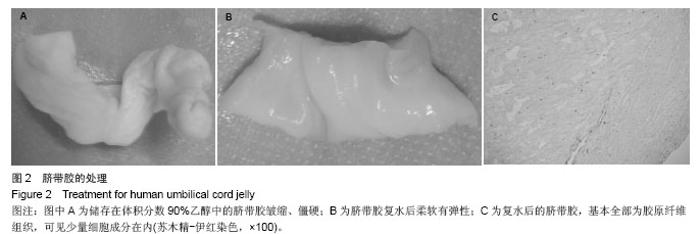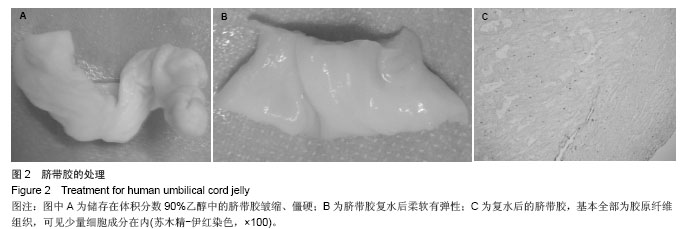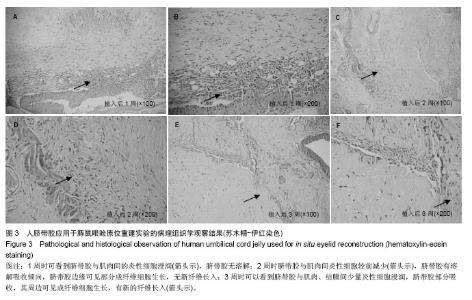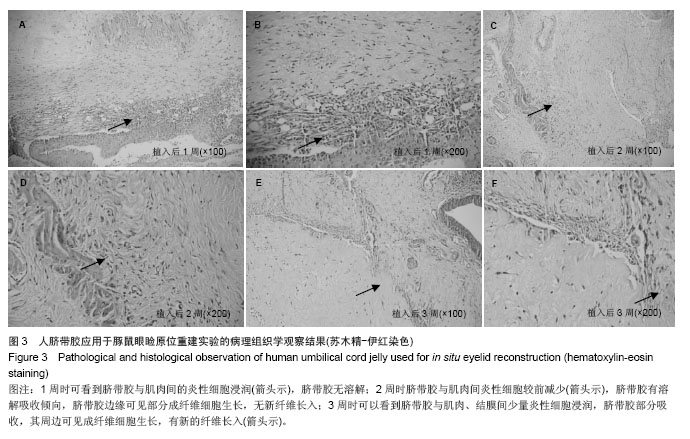| [1]Momeni A,Khosla RK.Current concepts for eyelid reanimation in facial palsy. Ann Plast Surg. 2014;72(2):242-245.
[2]Hubner H.Lid reconstruction: functional and aesthetic aspects.Klin Monbl Augenheilkd.2014;231(1):17-27.
[3]Harvey DT,Taylor RS,Itani KM,et al.Mohs micrographic surgery of the eyelid: an overview of anatomy, pathophysiology, and reconstruction options.Dermatol Surg. 2013;39(5):673-697.
[4]Zheng Y,Zhao J,Wang X,et al.The application of axial superficial temporal artery island flap for repairing the defect secondary to the removal of the lower eyelid basal cell carcinoma. Br J Oral Maxillofac Surg. 2014;52(1):72-75.
[5]Zollino I,Riberti C,Candiani M,et al.Eyelid reconstruction following excision of cutaneous malignancy.J Craniofac Surg. 2014;25(1): e13-17.
[6]杨侃,韦萍,王昀,等.鼻中隔软骨黏膜瓣移植在眼睑肿瘤切除术后眼睑重建中的应用[J].中国实用眼科杂志, 2013,31(3): 343-345.
[7]张向荣,周琼,肖卫,等.异种脱细胞真皮替代睑板材料重建眼睑的可行性[J].中国组织工程研究与临床康复,2011,15(3):395-398.
[8]黄丹平,巩迪,顾建军,等.生物型硬脑膜补片在兔睑板重建中的应用[J].中华生物医学工程杂志,2011,17(3):250-254.
[9]陈镇国,卢纯洁,王强.异体巩膜联合生物羊膜移植修复眼睑全层大缺损临床观察[J].中国实用眼科杂志,2010,28(2):142-144.
[10]朱敏,李国培,赵刚平,等.异体巩膜移植治疗眼睑全层缺损的疗效观察[J].临床眼科杂志, 2009,17(5):437-438.
[11]de Jong-Hesse Y,Paridaens DA.Correction of lower eyelid retraction with a porous polyethylene (Medpor) lower eyelid spacer--Medpor spacer in lower eyelid retraction.Klin Monbl Augenheilkd.2006;223(7):577-582.
[12]Tan J,Olver J,Wright M,et al.The use of porous polyethylene (Medpor) lower eyelid spacers in lid heightening and stabilisation. Br J Ophthalmol.2004;88(9):1197-200.
[13]Tantius B,Rothschild MA,Valter M,et al.Experimental studies on the tensile properties of human umbilical cords.Forensic Sci Int. 2014;236:16-21.
[14]Kaviani M,Ezzatabadipour M,Nematollahi-Mahani SN,et al.Evaluation of gametogenic potential of vitrified human umbilical cord Wharton's jelly-derived mesenchymal cells. Cytotherapy 2014;16(2):203-212.
[15]张典元,谢峰云,涂智.眼球摘除脐带球植入矫正眼窝凹陷[J].重庆医学,2004,33(1):146.
[16]陈玲,陈蔷娟.人脐带包裹羟基磷灰石义眼座的实验及临床观察[J].中华整形外科杂志, 2000,16(5):273.
[17]马代金,刘双珍.胎儿脐带后巩膜加固术的实验研究[J].眼科研究, 2004,22(5):502-504.
[18]牛彤彤,陶军,徐艳春,等.脐带在高度近视眼后巩膜加固术中的应用[J]. 国际眼科杂志, 2003,3(2): 98-99.
[19]Malik A,Shah-Desai S.Sliding Tarsal Advancement Flap for Upper Eyelid Reconstruction.Orbit.2014;33(2):124-126.
[20]杨蕊,杨建刚,王峰,等.眼睑恶性肿瘤切除术后自体硬腭黏膜移植眼睑再造[J].中国修复重建外科杂志,2006,20(5): 519-521.
[21]吴伯乐,黄庆琳.带粘膜鼻中隔软骨重建睑板缺损[J].眼外伤职业眼病杂志, 2005,27(2):114-115.
[22]邢健强.自体耳屏软骨移植在眼睑重建术中的应用[J].中国实用眼科杂志,2004,22(8): 618.
[23]Otero Rivas MM,Cocunubo Blanco HA,Gonzalez Sixto B,et al.Auricular Chondro-Perichondrial Graft in the Reconstruction of the Lower Eyelid.Actas Dermosifiliogr. 2014; 105(3):307-309.
[24]朱敏,李国培,赵刚平,等.异体巩膜移植治疗眼睑全层缺损的疗效观察[J].临床眼科杂志,2009,17(5):437-438.
[25]李静,李丽,任百超.应用异种脱细胞真皮的眼睑原位重建术的实验研究[J].中华整形外科杂志,2007,23(2):154-157.
[26]张向荣,周琼,肖卫,等.异种脱细胞真皮替代睑板材料重建眼睑的可行性[J].中国组织工程研究与临床康复,2011,15(3):395-398.
[27]Domanska-Janik K,Buzanska L,Lukomska B.A novel, neural potential of non-hematopoietic human umbilical cord blood stem cells.Int J Dev Biol.2008;52(2-3):237-248.
[28]张小牛,李世洋,马红利.胎儿脐带在后巩膜加固术中的应用观察[J].国际眼科杂志,2013,13(1):128-130. |



